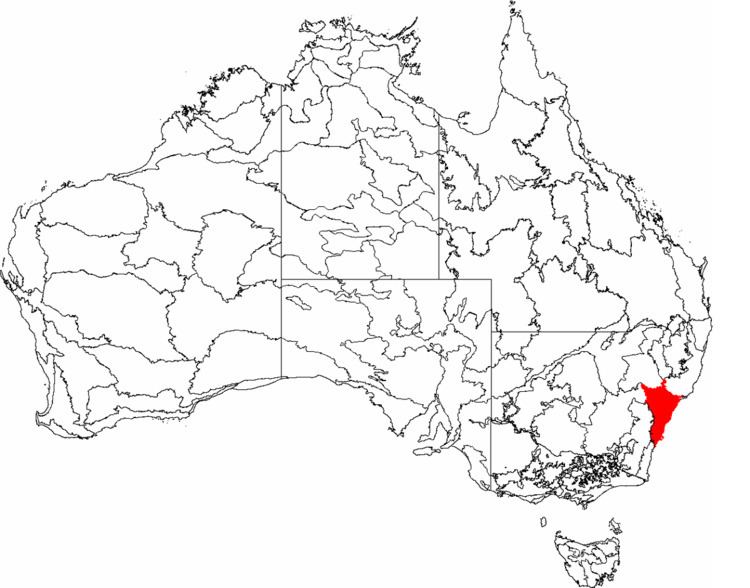Language family: Pama–Nyungan Language group: Dharug | Language branch: Yuin–Kuric | |
 | ||
Group dialects: Dharuk, Gamaraygal, Iora Bioregion: Cumberland Plain,
Sydney basin Location: Sydney, New South Wales, Australia | ||
The Darug people are a group of indigenous people of Aboriginal Australians that were united by a common language, strong ties of kinship and survived as skilled hunter–fisher–gatherers in family groups or clans scattered throughout much of what is modern-day Sydney.
Contents
The Darug were bounded by the Kuringgai to the northeast around Broken Bay, the Darkinjung to the north, the Wiradjuri to the west on the western fringe of the Blue Mountains, the Gandangara to the southwest in the Southern Highlands and the Tharawal to the southeast in the Illawarra area.
Alternate names
Other versions of the name include Daruk, Dharruk, Dharrook, Darrook, Dharug, Broken Bay tribe, and Dharung.
Territory
There is some dispute about the extent of the Darug nation. While some historians believe the coastal Eora people were a separate group to the Darug people; others believe the two groups were part of the same grouping. Taking the first perspective, the Darug were situated North-West of the Eora; convesely, the Eora were located South-East of the Darug.
The territory that was indisputably Darug Boorooberongal-Warmuli (Darug Lore) was the Cumberland Plain in western Sydney, that stretches from Wisemans Ferry in the north down to around Camden in the south. Some think the Darug people extended into the foothills of the Blue Mountains, others consider that they did not extend west of the Nepean River. They likely extended into the Hills District to the east.
A strong centre of cultural attachment for the Darug people has been the "Blacks Town" (at the modern suburb of Colebee) in the Blacktown local government area (formerly Blacktown Shire). However, in September 2012 the Blacktown City Council de-recognised the Darug tribe, which it had previously recognised as the former owners of the area. The Council also passed a motion, opposed by some Councillors, to begin a process to consider changing the name "Blacktown". An online petition was launched which called for the official re-recognition of the Darug. According to one of the Liberal Councillors, Cr Jess Diaz, "a consensus must be reached once and for all on who composed the traditional owners apart from the Darug people".
There was a cultural divide between the western Darug and the coastal Darug. The coastal Darug were katungal or 'sea people'. They built canoes and their diet was primarily seafood including fish and shellfish from Sydney Harbour, Botany Bay and their associated rivers. The inland Darug were paiendra or 'tomahawk people'. They hunted kangaroos, emus and other land animals and used stone axes more extensively.
Clans
The Darug nation was divided up into a number of clans who each tended to live in a certain geographic area. This geographic area would also house descendant clans. Each clan typically included 50 to 100 people. Numbers in a geographic descendant clan area were kept at the lowest levels necessary for the survival of the clan. It was often the case that men and women married between the clans, and thus the members of the clans were interrelated.
Known Darug clans included:
Disease
Smallpox introduced in 1789 by the British settlers wiped out up to 90% of the population in some areas. They lived in the natural caves and overhangs in the sandstone of the Hawksbury region, although some did choose to make huts out of bark, sticks and branches.
